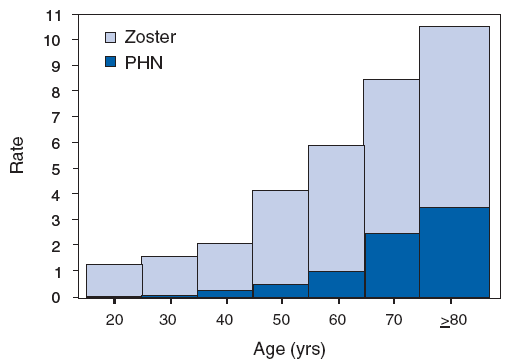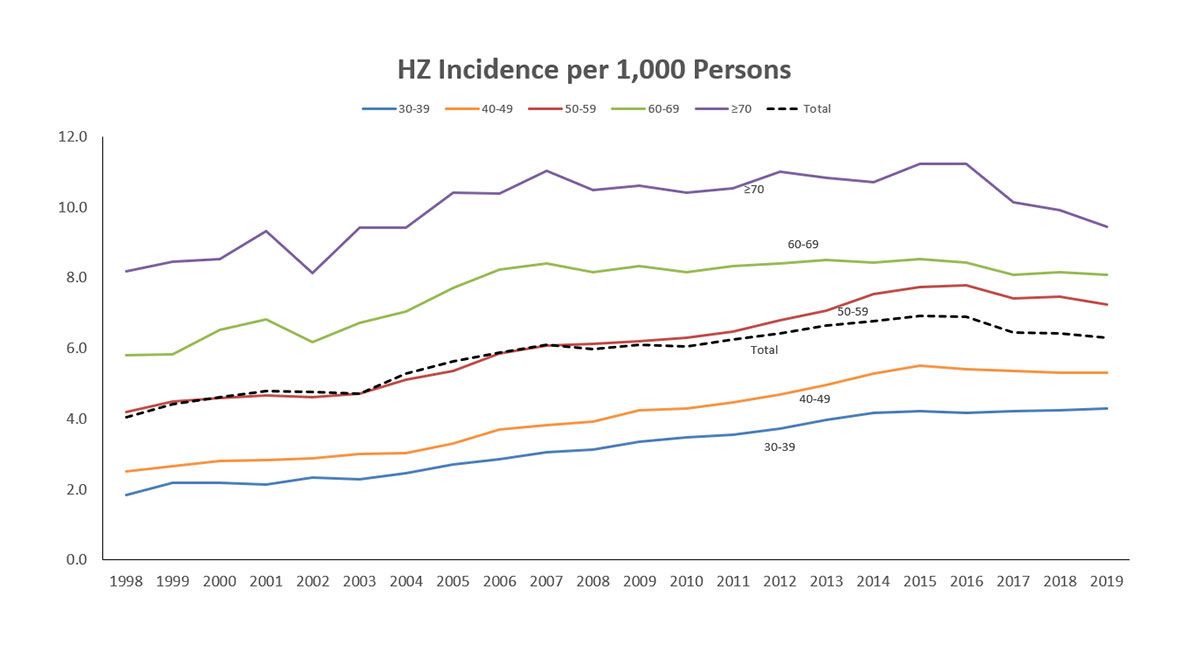Key points
- 1 in 3 people in the United States develop shingles at least once.
- Fewer than 100 people die of shingles each year.
- Risk increases with age and in people who have weakened immune systems.

Highlights
About 1 in 3 people in the United States will develop shingles in their life. Your risk of having shingles increases as you get older or if you have a weakened immune system.
Most people who have shingles only have it one time. However, you can have shingles more than once.
The most common complication of shingles is severe pain in the area where the shingles rash occurred. This is known as postherpetic neuralgia, or PHN. Approximately 10% to 18% of people with herpes zoster will get PHN. The risk of PHN also increases with age.
U.S. data
Hospitalizations
Approximately 1 to 4% of people with shingles go to the hospital for complications. Older adults and people with weakened or suppressed immune systems are more likely to need to go to the hospital.
About 30% of people in the hospital for shingles have a weakened or suppressed immune system.
Deaths
Fewer than 100 people die from shingles each year. Almost all shingles deaths are in older adults or people with compromised immune systems.
Trends
Herpes zoster rates among adults in the United States gradually increased over a long period. We do not know the reason for this increase. However, the rates across age groups have recently plateaued or declined.


